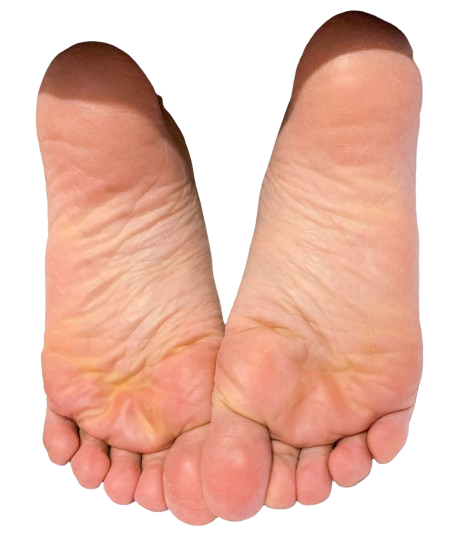
Foot injuries are a common concern among runners, often stemming from the repetitive stress and impact associated with the activity. From blisters to stress fractures, these injuries can significantly impact a runner’s performance and overall well-being. Understanding the various foot injuries that runners may encounter and knowing how to effectively treat and prevent them is essential for maintaining a healthy and enjoyable running routine. In this article, we’ll explore some of the most common foot injuries experienced by runners. Plus, practical tips on how to manage and mitigate their effects.
Check Out the Common Injuries for Runners and How to Deal With Them Effectively
Blisters
Blisters are among the most common foot injuries for runners, caused by friction and rubbing between the foot and the shoe or sock. To treat blisters, keep them clean and covered with a bandage. Avoid popping them if possible, and apply an antibiotic ointment to prevent infection. Wear properly fitting footwear and moisture-wicking socks to prevent future occurrences.
Plantar Fasciitis
Plantar fasciitis, another of the common foot injuries for runners, is inflammation of the plantar fascia, resulting in heel pain, especially during the first steps in the morning. Treat plantar fasciitis with rest, ice, and stretching exercises. Wear supportive footwear with arch support and consider using night splints or orthotic inserts to alleviate symptoms.
Achilles Tendinitis
Achilles tendinitis, also among the common foot injuries for runners, is inflammation of the Achilles tendon, causing pain and stiffness in the back of the heel or lower calf. Treat Achilles tendinitis with rest, ice, and stretching exercises. Wear supportive footwear and consider using heel lifts or orthotic inserts. Gradually reintroduce activity and consider physical therapy if symptoms persist.
Metatarsalgia
Metatarsalgia, one of the common foot injuries for runners, involves pain and inflammation in the ball of the foot due to increased pressure on the metatarsal bones. Treat metatarsalgia with rest, ice, and wearing proper footwear with cushioning and support. Consider using metatarsal pads or orthotic inserts to relieve pressure on the affected area.
Stress Fractures
Stress fractures, another common foot injury for runners, are small cracks in the bones, often occurring in the metatarsals or other weight-bearing bones of the foot due to repetitive stress. Treat stress fractures with rest, immobilization, and possibly using crutches. Gradually resume activity once the fracture has healed, and consider physical therapy to prevent recurrence.
Black Toenails
Black toenails, while not an injury per se, can result from trauma or repetitive impact, causing blood to accumulate under the toenail. Treat black toenails by keeping the area clean and dry. Trim the nail carefully if necessary, and wear properly fitting footwear to prevent further trauma. If pain or swelling persists, consult a healthcare professional.
Morton’s Neuroma
Morton’s neuroma, also counted among the common foot injuries for runners, is a thickening of tissue around a nerve leading to the toes, causing pain, numbness, or tingling. Treat Morton’s neuroma with rest, ice, and wearing properly fitting footwear with a wide toe box. Consider using metatarsal pads or orthotic inserts to alleviate pressure on the affected area.
Overpronation or Supination
Overpronation or supination, common biomechanical issues for runners, can lead to various foot injuries. Address these issues with proper footwear that provides stability and support. Consider using orthotic inserts or insoles to correct biomechanical imbalances. Perform strengthening exercises for the muscles of the feet and ankles to improve stability and reduce the risk of injury.
Tendonitis
Tendonitis, another common foot injury for runners, involves inflammation of the tendons in the foot. This often results from overuse or improper footwear. Treat tendonitis with rest, ice, and anti-inflammatory medication. Perform stretching and strengthening exercises for the affected tendons, and consider using orthotic inserts or supportive footwear to alleviate stress on the tendons.
Sesamoiditis
Sesamoiditis, while less common, can still affect runners, causing inflammation of the sesamoid bones beneath the big toe joint, resulting in pain and discomfort, particularly with push-off motions. Treat sesamoiditis with rest, ice, and wearing supportive footwear with cushioning in the forefoot. Consider using metatarsal pads or orthotic inserts to relieve pressure on the sesamoid bones. If pain persists, consult a healthcare professional for further evaluation and treatment.
Conclusion
Foot injuries are an inevitable part of a runner’s journey, but they need not derail one’s passion for the sport. By staying informed about common foot injuries like blisters, plantar fasciitis, and stress fractures, runners can take proactive steps to prevent these issues from occurring or worsening. Whether it’s through proper footwear selection, stretching and strengthening exercises, or seeking professional medical advice when needed, there are numerous strategies available to support foot health and longevity in running. By prioritizing injury prevention and adopting a comprehensive approach to foot care, runners can continue to enjoy the countless physical and mental benefits that running has to offer.

2 thoughts on “Common Foot Injuries for Runners and How to Treat Them”
Comments are closed.